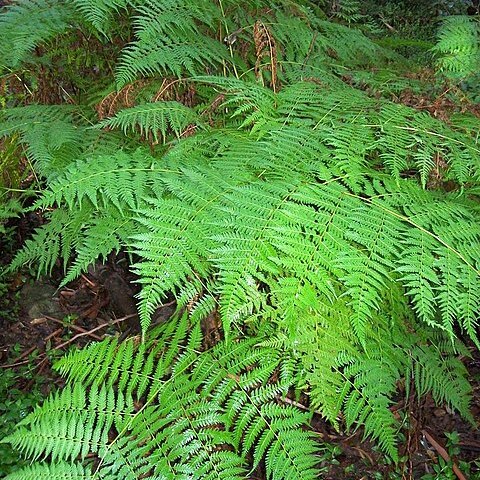Plants terrestrial, 40-120 cm tall. Rhizomes creeping or ascending, rhizome apices and stipe bases densely covered with lanceolate scales. Fronds approximate or 1-3 cm apart; stipe brown to stramineous, with scales only at base; scales lanceolate, brown or dark brown, without iridescence. Lamina ovate to pentagonal, 3-5-pinnate; basal pinna pairs largest, triangular, basal basiscopic pinnules of basal pinnae longest; distal pinnae or pinnules adnate to rachis or costae and decurrent at their bases; veins all free, veinlets on ultimate pinnules or lobes simple or forked, usually not reaching margin of leaf segments; lamina texture herbaceous, hairy on both surfaces; costae of pinnules prominent, densely covered with hairs. Sori usually terminal on veins and near margins of pinna lobes; indusia present or not; spores ellipsoid to spheroidal, perispore with inflated folds or tuberculate, sometimes broadly winged. x = 41.
Terrestrial ferns. Rhizome erect or, more commonly, creeping; scales thin, brown to black, entire, toothed or fringed, acute to acuminate. Fronds tufted to spaced. Lamina 2-5-pinnate, pentagonal; lowermost pair of pinnae greatly enlarged on the lower side; ridges on the grooves on the adaxial surface of the rachis continuous with the thickened pinna margin; central groove of rachis broad, shallow, hairy (glabrous in some non-Australian species); veins free. Sori rounded, borne on or at the tips of minor veinlets; indusium rounded to reniform, sometimes absent. Spores monolete, ellipsoidal.
Fronds usually about as long as wide; basiscopic margin of lamina-lobes thickened.

